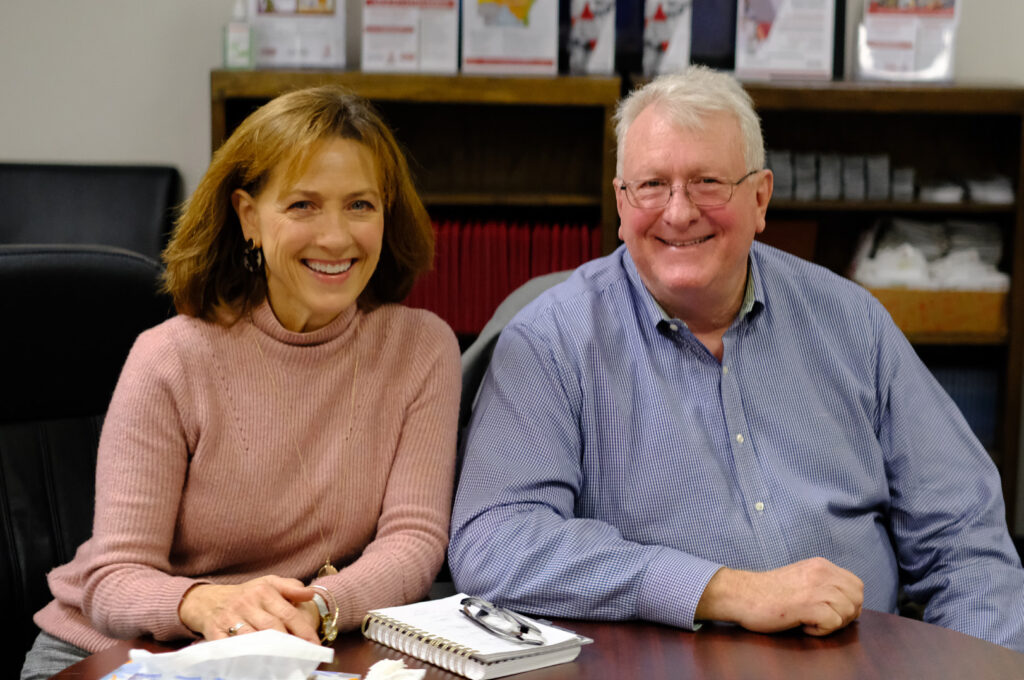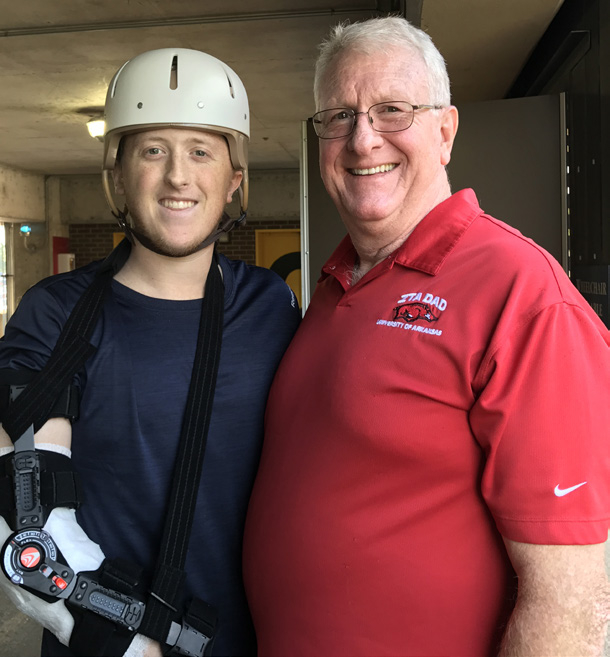Ask the Specialist: Fatigue after Brain Injury
By: Rani Haley Gardner, M.D., FAAPMR, BIM

Fatigue is one of the most common complaints after brain injury, regardless of injury severity! Fatigue is defined as “extreme tiredness, typically resulting from mental or physical exertion or illness.”(Reference 1) Just like the brain injury itself, fatigue is experienced differently from person to person.
When the brain is injured, it revs up your body’s use of energy, and it focuses on healing itself. By doing this, your brain does not leave you much energy to do anything else and you wear out fast! Mental AND physical activities can cause the brain injury survivor to fatigue quickly.
Physical fatigue is related to muscle weakness and decreased endurance. Mental fatigue results from having to think harder and longer on tasks that once came easily to you. After a brain injury, it is common for a survivor to
work harder to do tasks that once came easily to them. This can include something as mundane as getting dressed, taking a shower, reading a book, or talking with friends.
Physical fatigue can lead to mental fatigue, resulting in worsening processing speed, memory, and attention span. These types of fatigue typically worsen as the day goes on and improve with rest. This fatigue gets better as you get stronger and as your brain injury heals. (References 2,3)
Understanding the potential causes of fatigue after brain injury helps you compensate for a lower energy reserve and also helps you create a plan to improve your energy level.
Finding ways to compensate are helpful. Creating achievable “to-do lists” and taking frequent breaks during the day are very important. Maintaining good sleep hygiene and a routine sleep-wake schedule makes a difference! Exercising to help build endurance is good for EVERYONE suffering from fatigue, including brain injury survivors. Finally, be sure to talk with your brain injury specialist about post injury complications and other medical issues that can result in fatigue, so that these issues are diagnosed and managed appropriately. (Reference 4)
Check out the references below for additional reading on this topic and be sure to contact us with any questions.
- www.dictionary.com. 2019. 6 January 2019.
- msktc.org/tbi/factsheets/fatigue-and-traumatic-brain-injury. 2019. 6 January 2019.
- www.brainline.org/article/fatigue-and-tbi. 2019. 6 January 2019.
- pmr.uams.edu/wp-content/uploads/sites/50/2016/07/Sleep-and-Fatigue-after-Traumatic-Brain-Injury-revised-7-11-16.pdf. 2016. 6 January 2019.
Want to suggest a topic? Email us at braininjury@uams.edu.
Survivor/Caregiver Stories: The Parker Family
By: Kimberly Lamb

Lee Parker – Traumatic Brain Injury Survivor
At about 2 a.m. on July 1, 2017, Lee Parker, a student at the University of Arkansas in Fayetteville, was struck by a car on MLK Boulevard while walking to his apartment. The driver of the car called 911. When paramedics arrived, they found that Lee was suffering from two collapsed lungs, a severely mangled
right arm that was nearly amputated, significant blood loss, and a fractured skull with immediate swelling to his head. During transport to Washington Regional Medical Center, Lee went into cardiac arrest, but his pulses returned with CPR before arrival.
At 4 a.m., the police notified Lee’s parents about the accident. Dan and Gigi Parker began the 200 mile journey from their home in Little Rock to Washington Regional Medical Center in Fayetteville. Dan said, “I drove, and Gigi prayed the entire way.”
At 5:30 a.m., the Parkers received a call from the neurosurgeon to inform them that Lee had been stabilized and was ready for surgery. Gigi called their family members, and a prayer chain began. Dan, an RN, and Gigi, a speech pathologist, understood the severity of the injuries. They were relying on their faith to pull their family through.
At 7 a.m., the Parkers arrived at the hospital. Lee’s surgery lasted six hours and resulted in the removal of a 6-inch circle of his skull to allow removal of a blood clot and to provide room for his brain to expand. Lee’s prognosis was grim. If he lived, the Parkers were told to expect major deficits from the brain injury and, if his arm survived, he would have no use of his right hand.
The First 10 Days
After his initial surgery, Lee spent four days in the ICU before being moved to the neurology floor. Lee’s Caring Bridge site documents the remarkable details of these early days.
Day 1: Lee received a craniotomy to relieve the elevated pressure in his brain. There were no spinal cord issues or obvious brain stem concerns. His left temporal skull was fractured.
Day 2: Lee improved enough to get the intracranial monitor out of his skull. A CT scan showed that his brain was returning to its normal size. His Glasgow Coma Score had increased to 7 from the initial 4 at admission, and was expected to improve as he was weaned from the ventilator.
Day 3: Lee was taken off sedation at 7:30 a.m. and was unassisted by the ventilator at 8 a.m. He responded to commands to move his feet and hands, and even gave a “thumbs up” sign when asked. Lee would require a helmet for at least three months to allow the brain swelling to subside and then the doctor could replace the cranial gap with a titanium plate.
Day 4: Lee recognized his parents for the first time since the accident. He passed a swallow study and ate lunch. He also walked about 40 yards with assistance. By then, the Parkers were thinking, “This was not a lucky sequence of events. It was a divine, spiritual, supernatural intervention by the Grand Physician, fueled by our prayer warriors.”
Over the next six days, the Parkers watched Lee shift between his normal, sweet personality to episodes of anxiety, confusion, and belligerence. Lee didn’t understand why he couldn’t get back to his pre-accident life, and he wanted to reclaim his independence.
On day 8, the Caring Bridge entries reflect both suffering and gratitude. Gigi said, “Watching Lee struggle through such deep anguish is gut wrenching and exhausting, but at the same time, we’re thankful to be here in light of what occurred eight days ago.”
Despite the rough patches, Lee continued to improve ahead of schedule. On day 10, Lee was transported to the Baptist Health Rehabilitation Institute (BHRI) in Little Rock.

The Rehabilitation Process
Dan and Gigi actually met at BHRI in 1985. At the time, Dan was serving as the assistant administrator and Gigi was finishing her master’s degree in speech pathology. Little did the Parkers know that they would come full circle with their relationship to BHRI some 32 years later with their son as a patient.
Once at BHRI, Lee began physical, occupational, and speech therapy (PT, OT, ST) immediately. Throughout his rehabilitation, Lee began to understand more about his accident and his need to progress. Lee underwent surgery at Baptist Health Medical Center to remove fixation pins in his right elbow and install a plate hinge. Four months later, he would undergo nerve grafts in St. Louis.
He returned to BHRI after surgery and continued his therapies. During this time, Lee came to accept the need to sit out of school for a semester. To help lessen the blow of his time off, the Parkers enrolled together in a free online boating course. The course helped Lee to continue learning and stay focused.
By the end of July, Lee was released from BHRI and returned home with the Parkers. At home, he continued outpatient PT, OT, and ST 2-3 times a week. In an Aug. 9, 2017, Caring Bridge entry, Gigi said, “Trust, communication, schedules, finding the ‘new’ normal, being flexible, all are requirements for successful transition, and they do not all come together at once.”
Day by Day
Although Lee was well into recovery when released from BHRI, he still faced other surgeries: a metal plate removed from his right elbow In August, and in October, both a nerve transplant and bone flap replacement.
Today, 18 months later, Lee Parker has made almost a full recovery. Although there are still nerve regeneration needs in his right arm and hand, he has regained most of its use.
In 2018, Lee graduated from the University of Arkansas with a degree in business. He is currently employed full-time by JB Hunt. The Parkers fondly remember all those who bridged the gap for them through prayer, sitting
in waiting rooms, providing food, and offering hotel rooms for rest.
Lee’s Caring Bridge site is a testament to the family’s faith and to their support network. When asked what advice she would share with others facing the care of a loved one with a traumatic brain injury, Gigi said, “Be a balanced advocate for your loved one without being aggressive. Develop your circle of support, rely on your faith, and never give up!”

Lee’s Helpful Hints on the Path to Recovery
Be as active as you are able. Exercise your mind and body through reading, thinking, expressing thoughts verbally, and walking around while taking in your surroundings.
Overcome frustrations. When frustrations set in, take a breath, take a step back, and rely on family, friends, and your circle of support for help.
Trust and ‘buy in’ to the process. Trust that those incredible men and women, medical professionals, are in the journey with you and are wise to the next step in the process.
Embrace Patience and the Power of Positivity. It’s a marathon not a sprint. Take it day by day. Celebrate the small victories, and remember that there may be hiccups and road bumps along the way, but tomorrow is a new day.
Want to share your story? Email us at braininjury@uams.edu.
Social Security Disability Pointers: Who to Contact: Social Security or Medicaid?
by Tonya Cater, Social Security Public Affairs Specialist
Sometimes it’s confusing to know who to contact and for what. Social Security and Medicare offer similar and related services, so people aren’t always certain who does what. This “cheat sheet” can help you know who to call.
Contact Social Security to:
- See if you’re eligible for Medicare.
- Create a “my Social Security” account to do things like request a replacement Medicare card and report a change of address, name, or phone number.
- Sign up for Medicare Part A (Hospital Insurance) and Medicare Part B (Medical Insurance).
- Apply for extra help with Medicare prescription drug coverage (Part D) costs.
- Report a death.
- Appeal an Income-Related Monthly Adjustment Amount (IRMAA) decision (for people who pay a higher Part B and/or Part D premium if their income is over a certain amount).
Find information on how to do all of this and more at www.socialsecurity.gov and www.socialsecurity.gov/benefits/medicare.
Contact Medicare to:
- See what services Medicare covers.
- Get detailed information about Medicare health and prescription drug plans in your area, including costs and services.
- Choose and enroll in a Medicare health or prescription drug plan that meets your need.
- Find a Medicare Supplement Insurance (Medigap) policy in your area.
- Find doctors, health care providers, and suppliers who participate in Medicare.
- Get information and forms for filing a Medicare appeal or for letting someone speak with Medicare on your behalf.
- Compare the quality of care provided by plans, nursing homes, hospitals, home health agencies, and dialysis facilities.
- View Medicare publications.
Visit www.medicare.gov for these services. To learn more about your claim status or deductibles, or for questions about premium payments, you can call 1-800-MEDICARE (1-800-633-4227; TTY: 1-877-486-2048).
Determining who to contact is the first step in getting the answers you need. Please share these lists with family and friends who need to know more about Social Security and Medicare.
Please be aware that past newsletter issues may contain outdated information. For the latest updates on resources and events, visit our website or contact us at braininjury@uams.edu with any questions.
